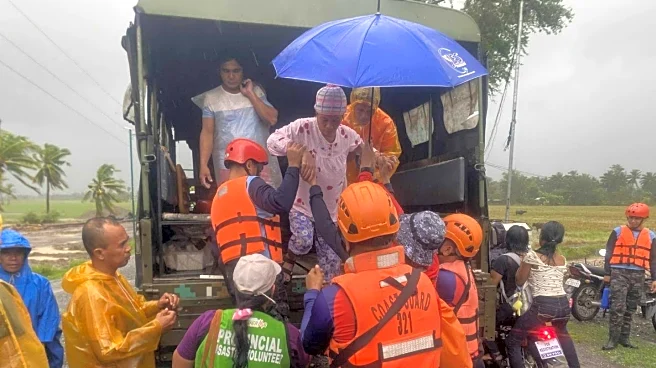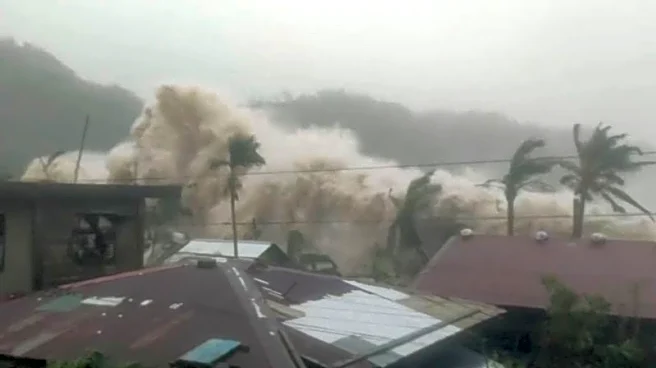What's Happening?
Super Typhoon Fung-Wong made landfall in Aurora province in the Philippines on Sunday night, resulting in at least two deaths and displacing more than 1.4 million people. The storm, categorized as a super
typhoon, had maximum sustained winds of 115 mph and gusts up to 143 mph. It has since moved out of the northwestern Philippines, heading towards Taiwan, while leaving extensive damage and power outages in its wake. The typhoon weakened as it moved through mountainous northern provinces and agricultural plains overnight before blowing away from La Union province into the South China Sea. It is forecast to head northwest toward Taiwan, expected to make landfall over western Taiwan on Thursday before rapidly weakening over the Taiwan landmass and emerging near the Ryukyu Islands as a remnant low or weak tropical depression.
Why It's Important?
The impact of Typhoon Fung-Wong is significant as it exacerbates the challenges faced by the Philippines, which was already recovering from Typhoon Kalmaegi. The displacement of over 1.4 million people and the destruction of infrastructure highlight the vulnerability of the region to natural disasters. The typhoon's path towards Taiwan also poses potential risks to another densely populated area, which may face similar challenges in terms of evacuations and infrastructure damage. The ongoing rescue and relief operations are crucial to mitigate the immediate effects and prevent further casualties.
What's Next?
Authorities in the Philippines are focused on clearing blocked roads, assessing damage, and conducting rescue operations as weather conditions improve. The typhoon's trajectory towards Taiwan suggests that similar preparations and emergency measures may be necessary there. The international community may also offer support and aid to assist in recovery efforts, emphasizing the need for coordinated disaster response strategies in the region.
Beyond the Headlines
The recurring typhoons in the region underscore the importance of enhancing disaster preparedness and infrastructure resilience. Long-term strategies may include investing in more robust evacuation plans, improving early warning systems, and strengthening community awareness programs. The ethical dimension involves ensuring equitable access to resources and support for affected populations, particularly in remote and vulnerable areas.













